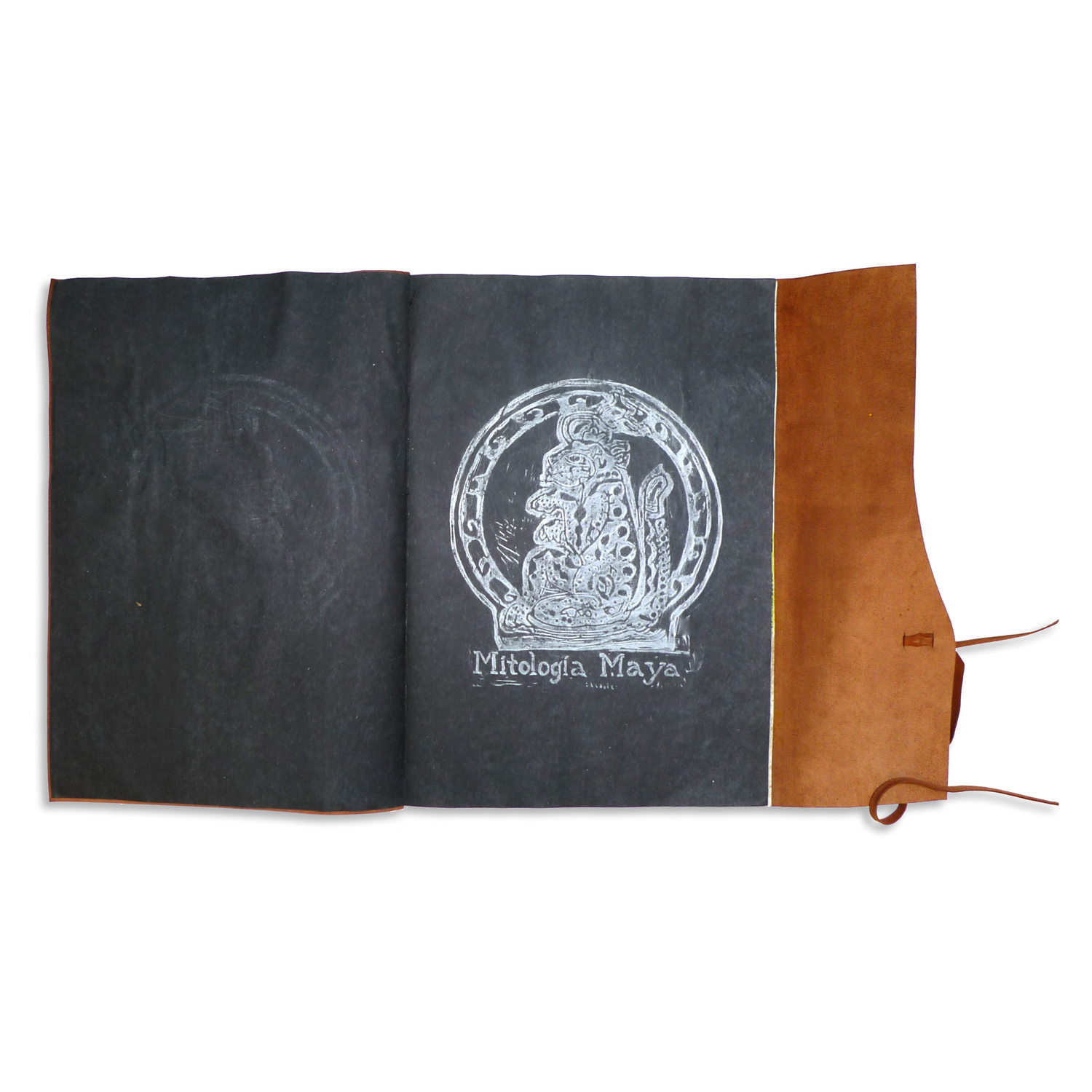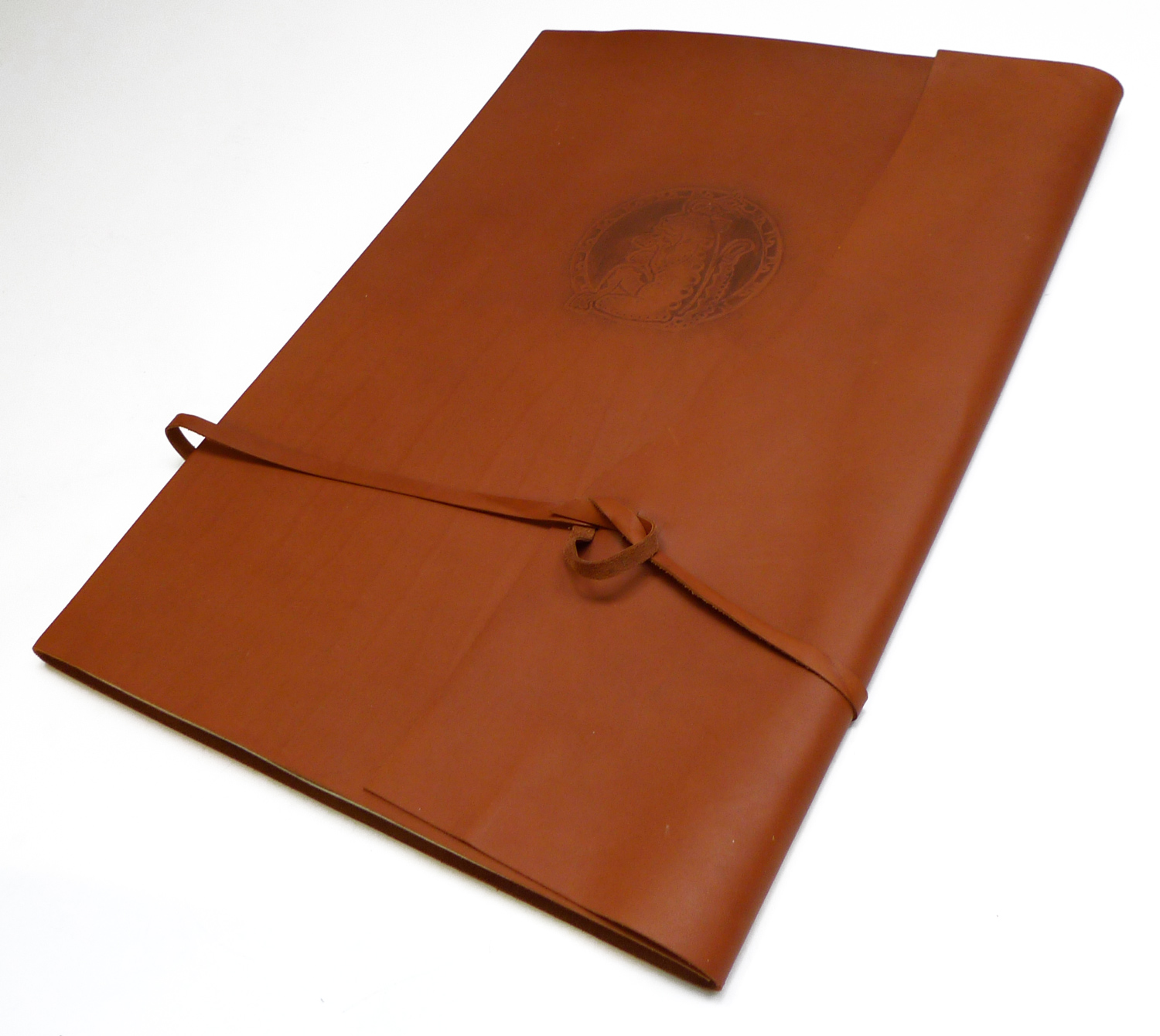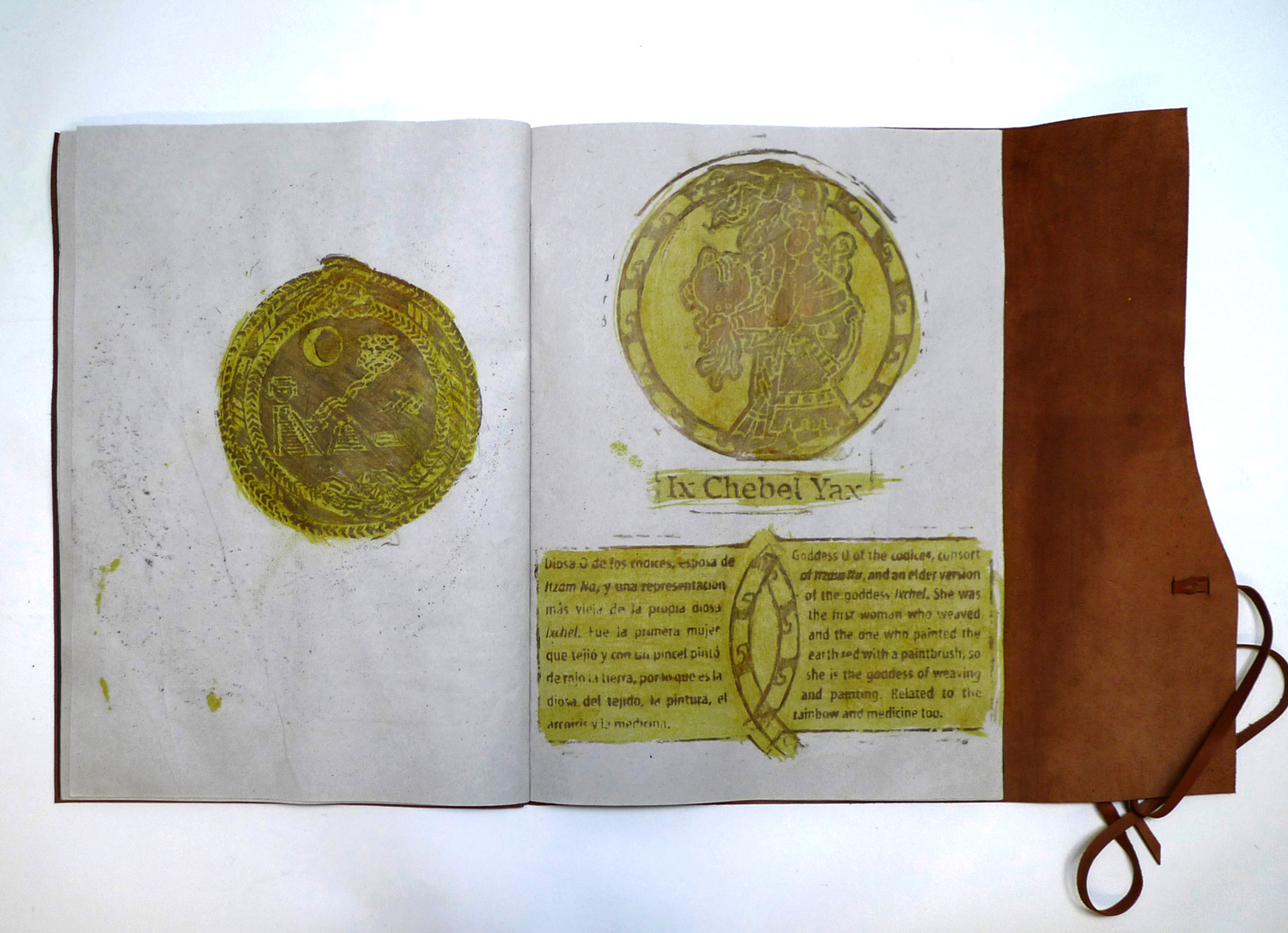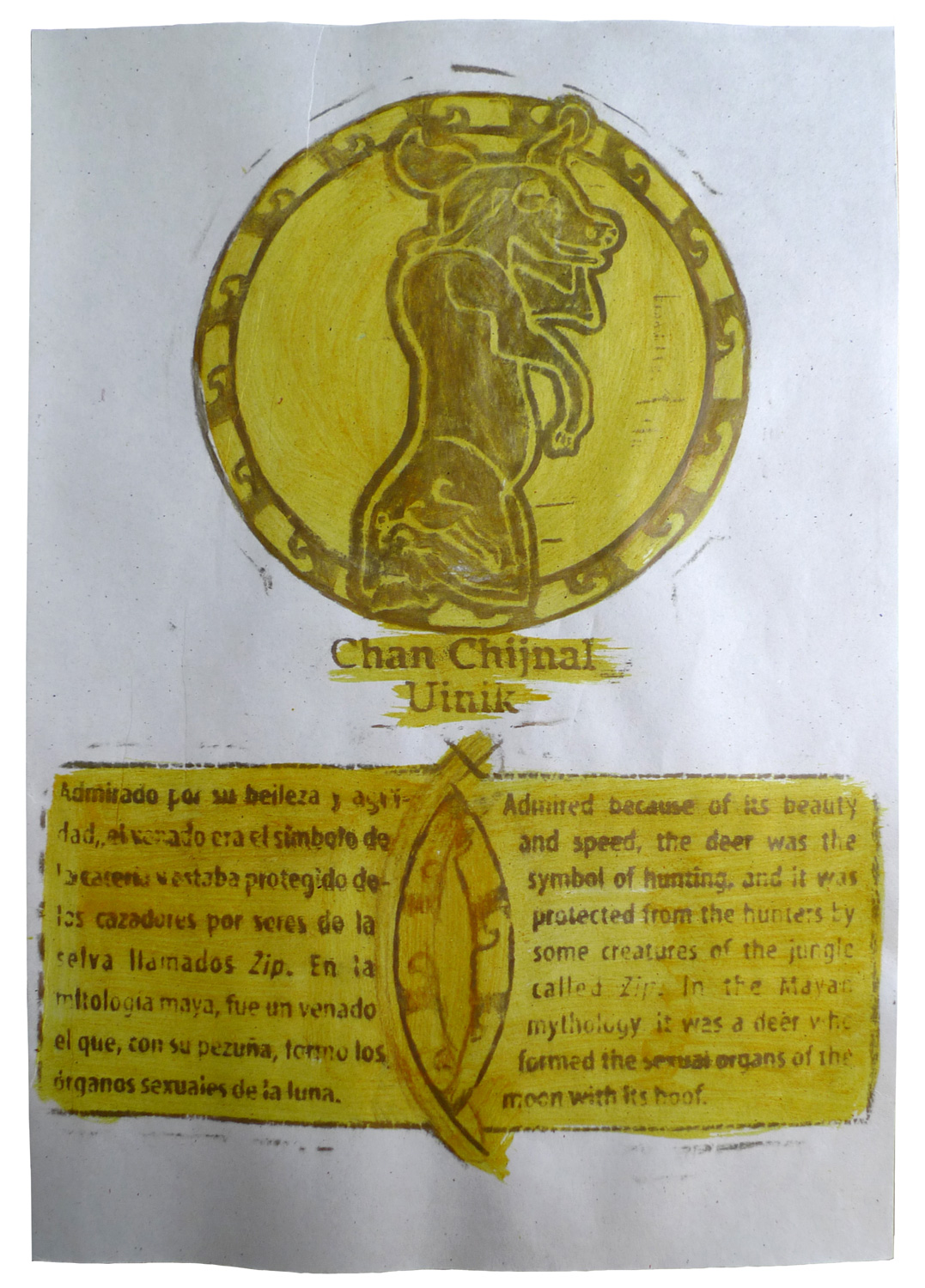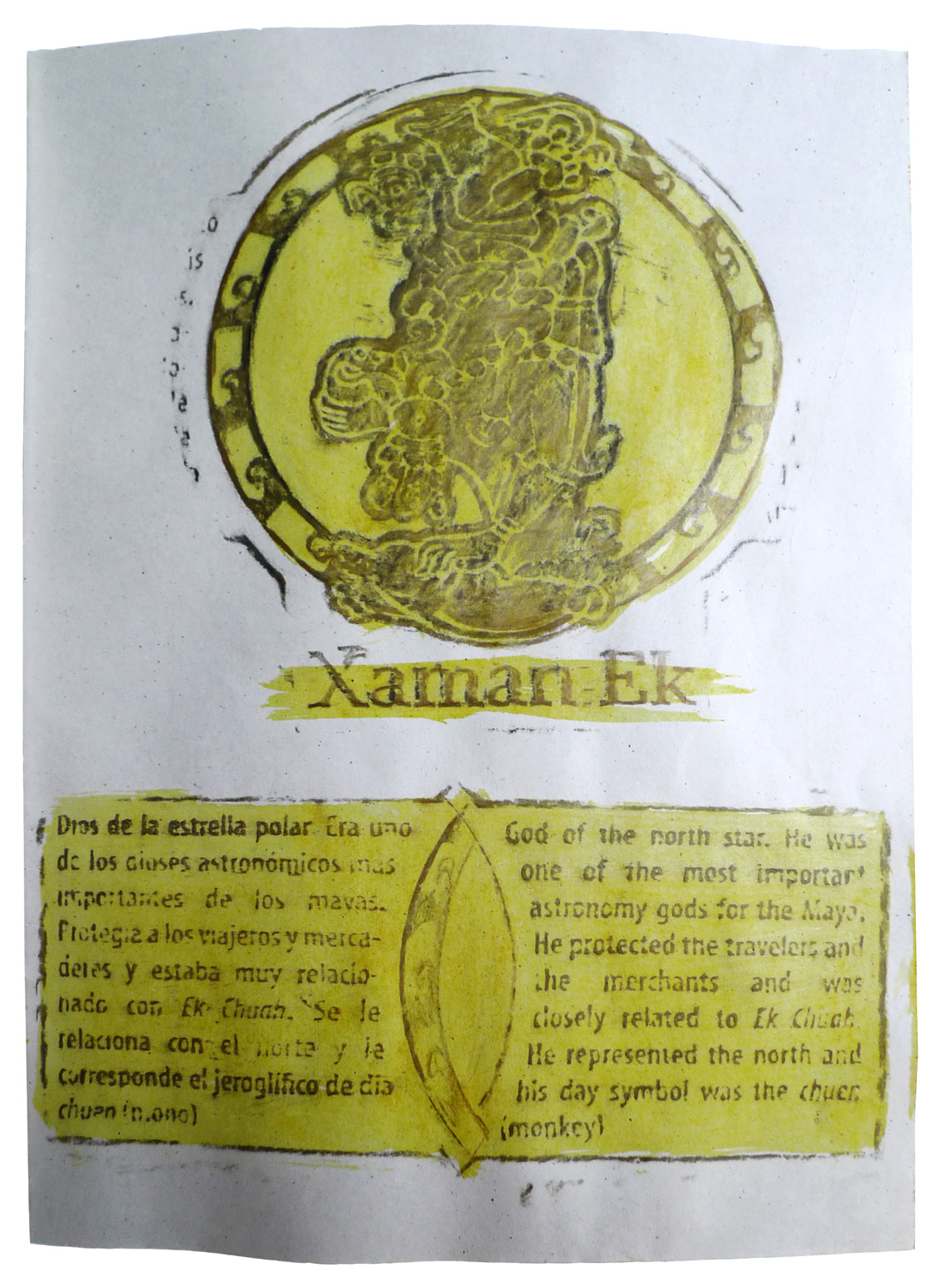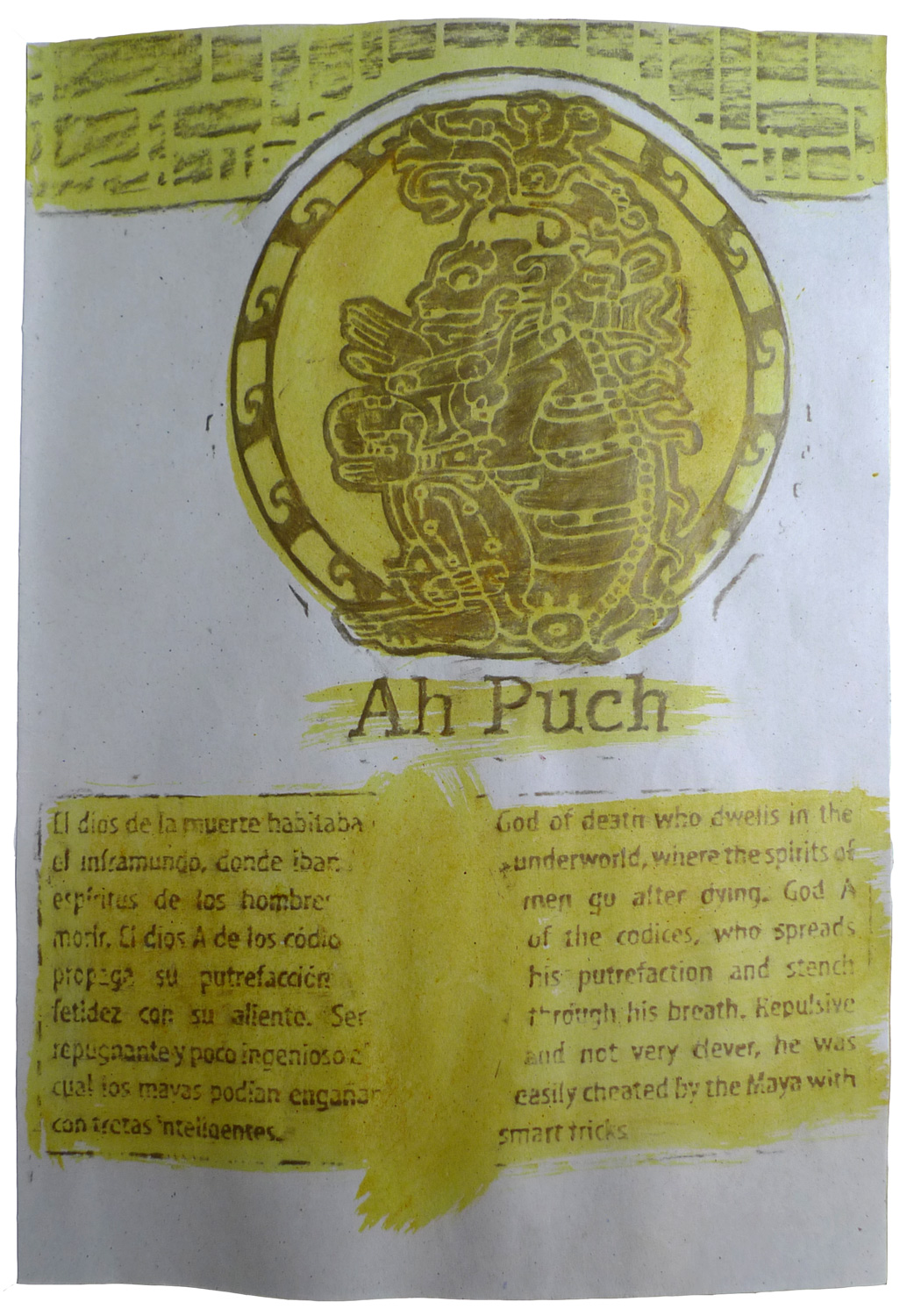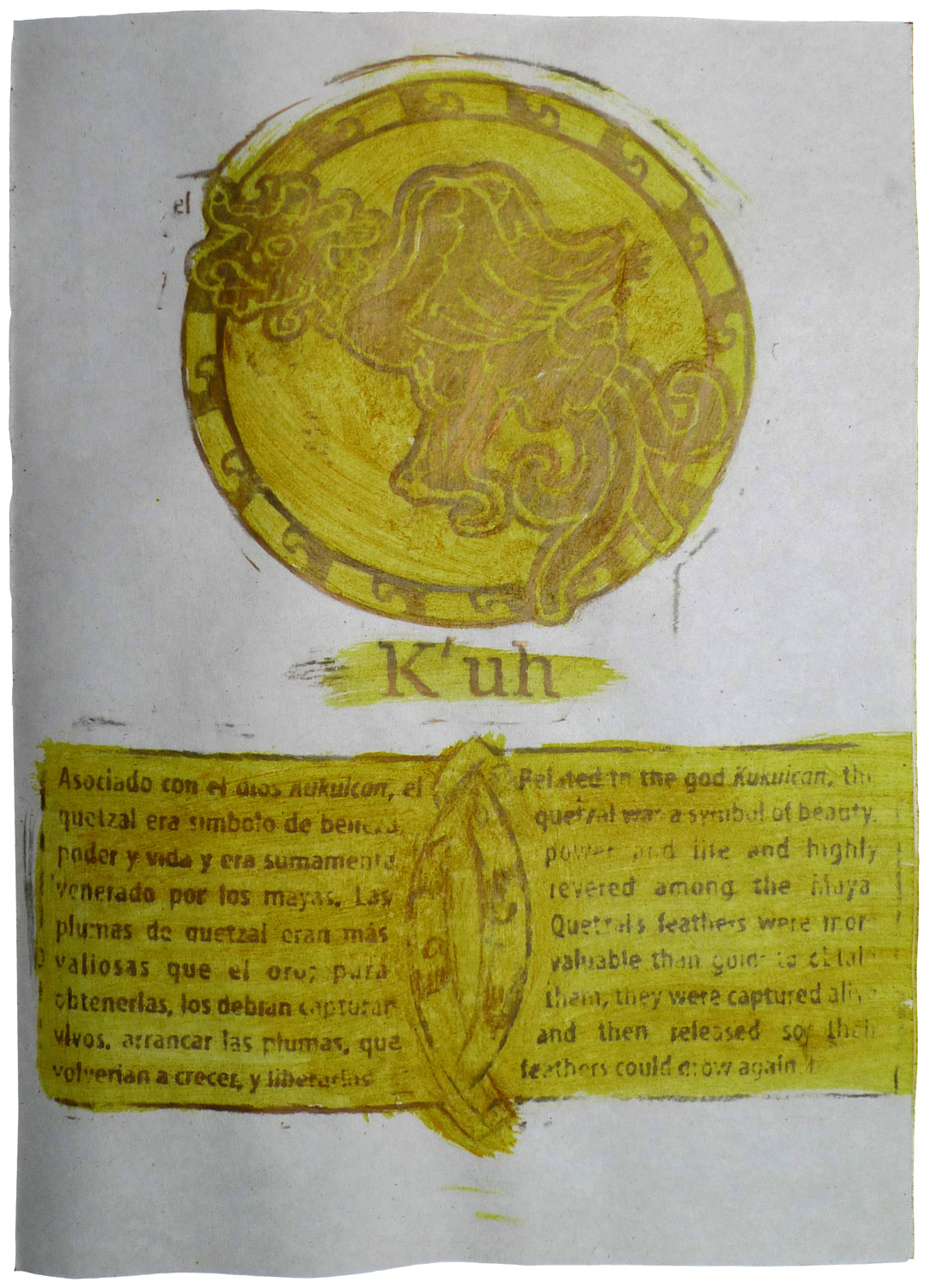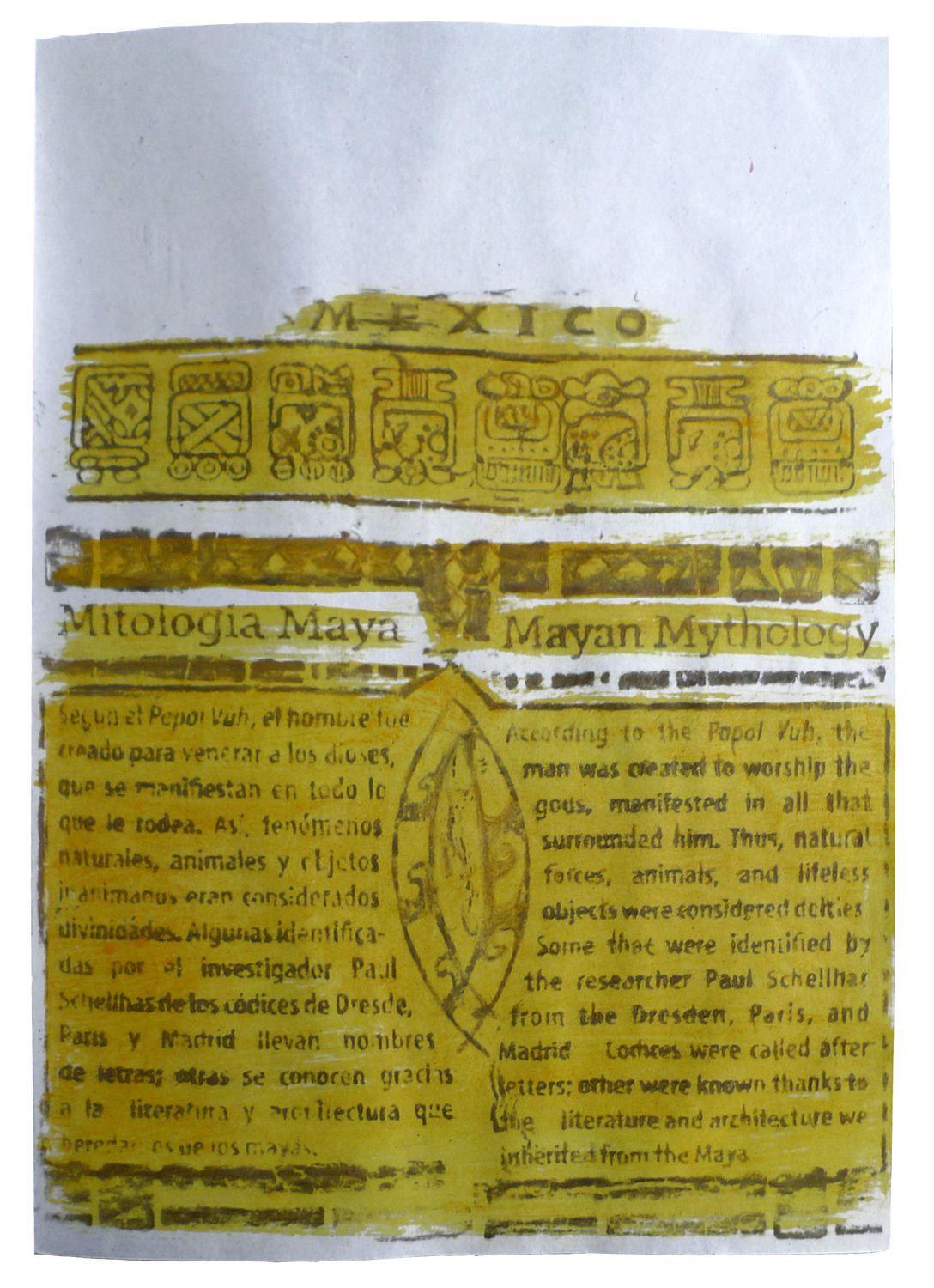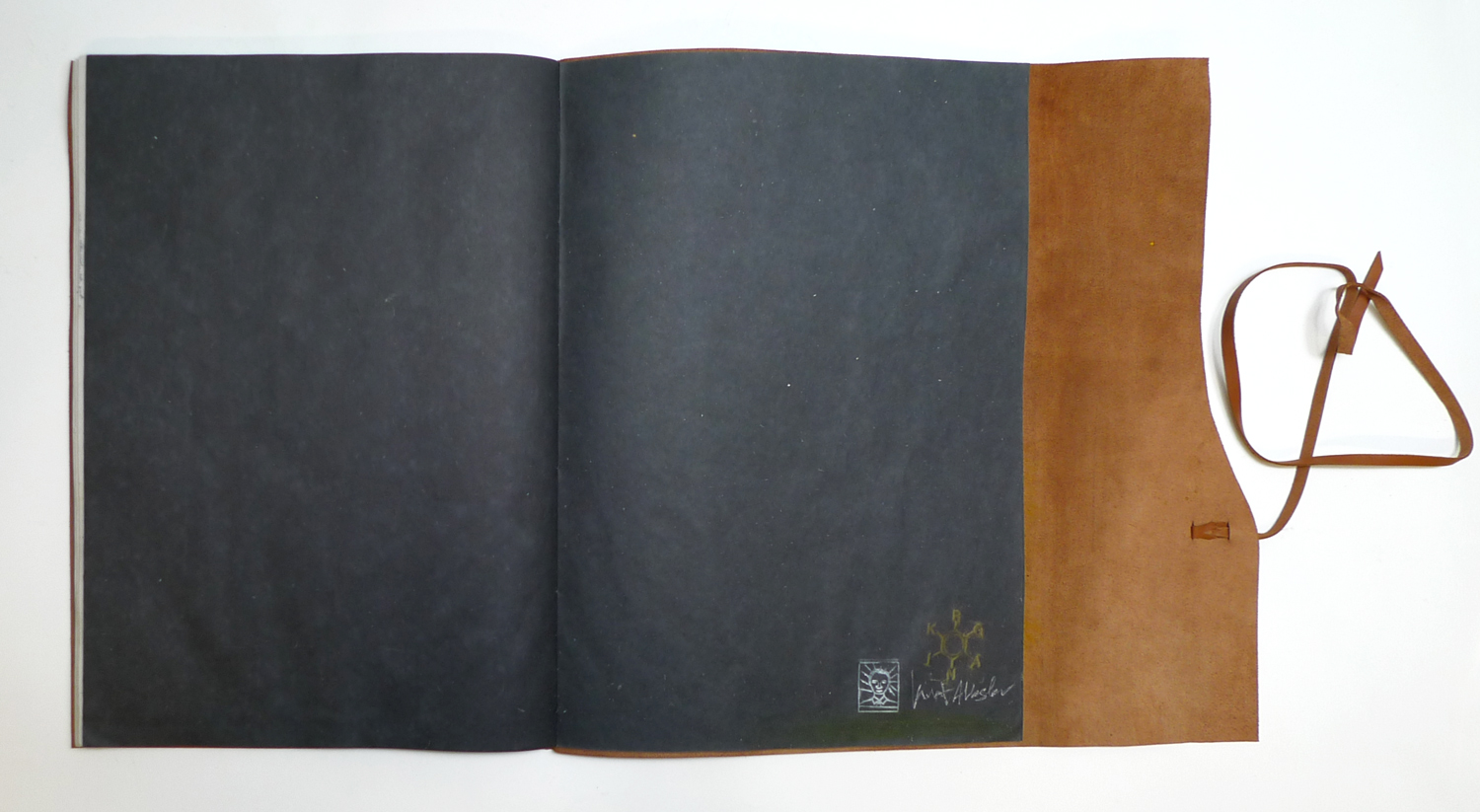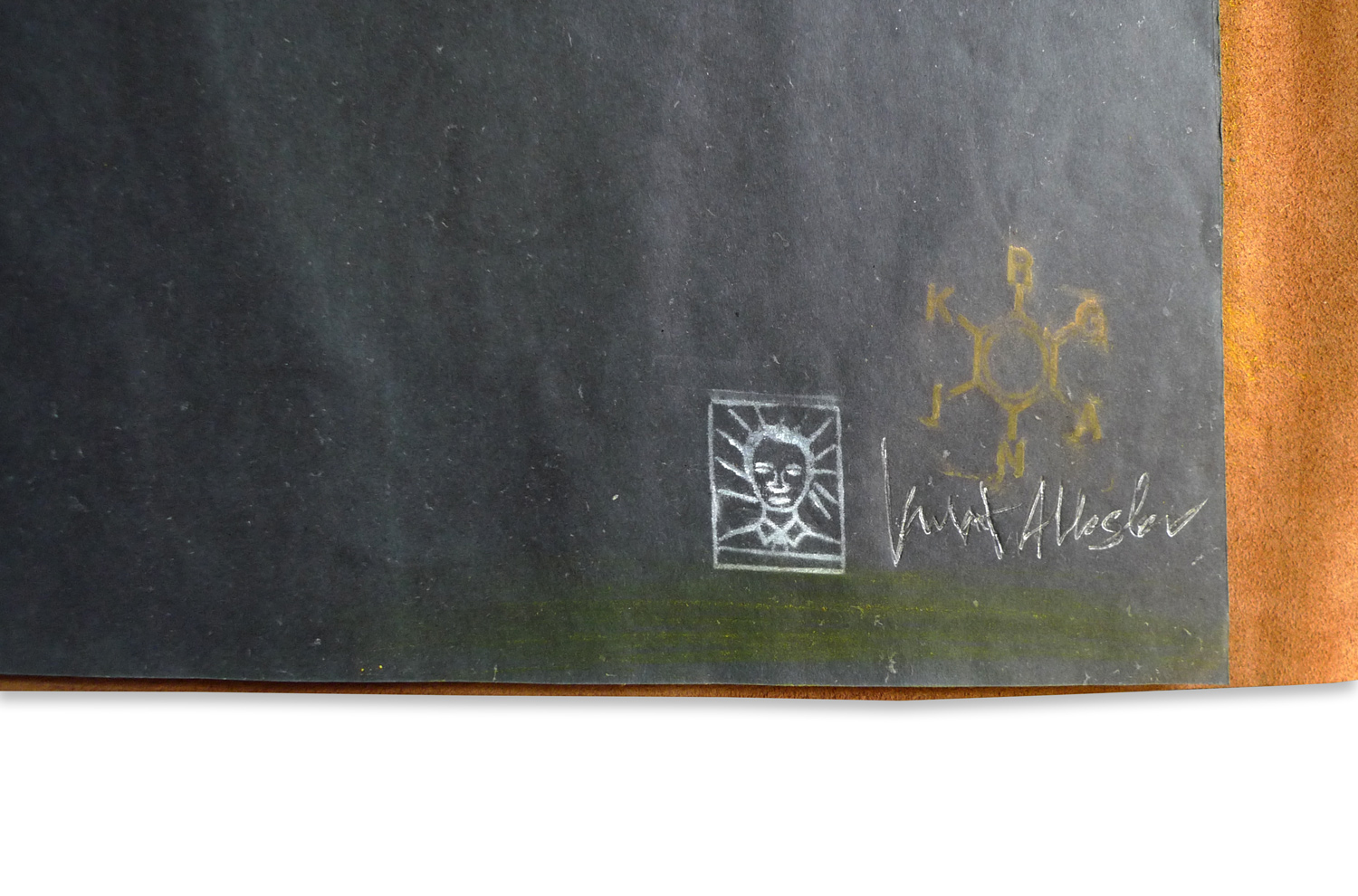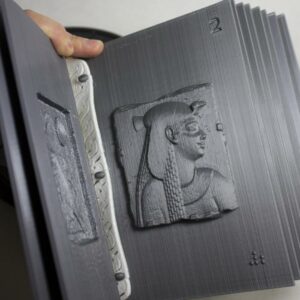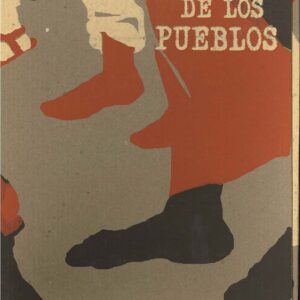Mitologia Maya
Mitologia Maya
Date
2022
Edition Size
unique
Media
Hand-painting, Linoleum relief, Rubbing, Turmeric pigment
Binding
Leather case, full
Dimensions
19.25 × 13.75 × .5 in
Pages
26
Collection
Collection Development, Unique Books$ 4,800.00
1 in stock
Rubbings made in Playa del Carmen, Quintana Roo, Mexico in 2010
Calfskin cover binding and embossing by Sara Parkel
Title page image and text linocut by K. Allerslev
Closing text in the book:
“According to the Popul Vuh, the man was created to worship the gods, manifested in all that surrounded him. Thus, national forces, animals, and lifeless objects were considered deities. Some that were identified by the researcher Paul Schellhas from the Dresden, Paris, and Madrid Codices were called after letters; others were known thanks to the literature and architecture we inherited from the Maya.”
Dr. Paul Schellhas (1859?-1945) published the first edition of his “Deities of the Maya Manuscripts” pamphlet in 1897. It was updated, translated (by Selma Wesselhoeft and A. M. Parker), and published by the Peabody Museum of American Archaeology and Ethnology, Harvard University in 1904 and can be found online here.
After retiring from his life as a lawyer and district judge, he began studying Egyptian hieroglyphic writing when he encountered the Dresden Manuscript – an illuminated Mayan manuscript kept in the Saxon State Library in Dresden. Once thought to be the oldest surviving book written in the Americas, the Dresden manuscript dates from the 11th or 12th century. It was later determined that the Maya Codex of Mexico (previously known as the Grolier Codex) is older.
By systematically comparing the illustrations in the three ancient Mayan texts available to him at the time, his work formed the foundation of the early interpretation of the Mayan mythology and contributed to the decoding of Mayan writing. The Dresden, Paris, and Madrid manuscripts (also named for the European cities where they are kept) contain a series of images of some major Mayan gods. There are about fifteen human figures, several animal figures, and some with human bodies; these were at the time believed to represent the primary Mayan gods. Now, however, it is generally accepted that there are many more gods in the Mayan pantheon.
While in Mexico with my family in 2010, I found a series of carved wooden plaques along the main tourist center of Playa del Carmen in Quintana Roo, Mexico that are based on the work of Dr. Schellhas. Playa del Carmen, once called “Xaman-Ha,” (“Waters of the North”) was an important stop along the Mayan pilgrimage to the sacred island of Cozumel. Using the only suitable locally-made paper I could find, I made rubbings of each plaque, collaging the text and images into the recto page format. The plaques were hidden in a series of planters along the side of the street and in various states of neglect. Once back in the studio, each rubbing was meticulously touched up with bronze rubbing sticks to make up for the lack of detail in the original rubbings and dyed with turmeric. The image of Balam was then used to carve a new linocut image for the title page.
— Kurt Allerslev, 2022

